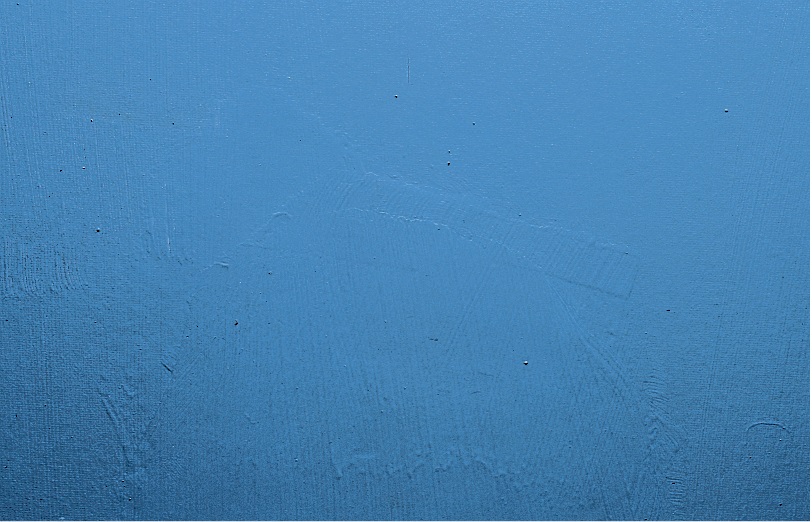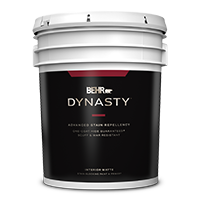Many homeowners want to save money by painting their own homes while others hire professionals because they know problems can arise. This scenario is the perfect opportunity to let your expertise shine. Combining the right tools and techniques with BEHR® Paint and applying expert knowledge for sometimes tricky situations will set you apart from the competition. Here are the top five common residential problems painters face with interior and exterior surfaces.
Poor Hide

Sometimes, the previous color shows through when a fresh coat of paint dries. If you’ve had a homeowner call you after hours because this happened, you understand how frustrating it can be. But it’s easily avoided with the following tips.
- Use quality paint, such as BEHR DYNASTY® Interior Paint & Primer or BEHR MARQUEE® Interior and Exterior Paint & Primer to provide sufficient coverage.
- Use the right brush and roller cover. Don’t make-do because you don’t have the right type or nap on the truck. Instead, wait and get the right tools before proceeding.
- Don’t overspread. Always apply the paint as directed to achieve the best coverage.
To solve a case of poor hide, simply use the proper tool to apply another coat of paint at the recommended spread rate.
Poor Blocking

Having a freshly painted window stuck fast would irritate any homeowner. Blocking occurs when two painted surfaces touch each other, stick, and then peel when separated. Choosing the right paint is your first line of defense. Acrylic latex paints perform better than vinyl acrylic paints for early block resistance. But if you have plenty of drying/curing time, alkyd and oil-based paints are superior. Prevent blocking of painted surfaces with the following tips.
- Allow sufficient dry time for all surfaces before closing windows or doors.
- Allow sufficient drying time between coats.
- Use top-quality semi-gloss or gloss paint such as BEHR® Kitchen, Bath & Trim Primer & Sealer or BEHR PREMIUM® Cabinet, Door & Trim Enamel in humid areas.
- Always follow the manufacturer’s instructions regarding drying times.
Surfactant Leaching

A surfactant is a necessary water-soluble ingredient in paint that improves its spreadability. In some conditions, surfactants rise to the surface of the coating and result in a dirty, streaked appearance. Leaching can happen over time or soon after the paint is applied. In both instances, humidity is the culprit. Ways to avoid surfactant leaching include:
- Avoid painting in temperatures below 50 degrees Fahrenheit or in the late afternoon when temperatures will drop overnight.
- Never paint over leaching. Remove it before applying another coat of paint.
- Choose lighter shades for humid areas. Deeper colors are more prone to surfactant leaching.
- When leaching happens, wash the area with soap and water and rinse as soon as possible to prevent the stain from setting.
Flashing

Flashing is the term used to describe an uneven appearance in the paint’s sheen. It occurs when the coating is lapped or otherwise applied unevenly. Flashing also happens when a porous substrate is not properly primed or when using low-quality paint. Solutions to prevent this common residential painting problem include:
- Prime and seal new substrates before applying the topcoat.
- If spraying, use proper spray techniques.
- If rolling, use a top-quality roller cover with the correct size nap.
- Always use quality paint such as BEHR® DRYWALL PLUS Interior Drywall Primer & Sealer, BEHR ULTRA® Interior and Exterior Paint & Primer, and BEHR MARQUEE® Interior and Exterior Paint & Primer.
- Apply an additional coat to even out the sheen.
Poor Flow and Leveling

When paint fails to dry into a smooth film, it reveals brush or roller marks due to poor flow and leveling. Several contributing factors include poor-quality paint, using the wrong tools, and drying too fast. If this is a problem you’re encountering, here are a few ways to solve it.
- Always use high-quality latex paints like BEHR DYNASTY® Interior Paint & Primer or BEHR PREMIUM PLUS® Interior and Exterior Paint & Primer.
- Use the correct type of roller cover with the recommended nap length.
- Choose a high-quality brush suited for the type of paint.
- Avoid rapid drying conditions like temperatures above 90 degrees Fahrenheit and low humidity.
- Once the coating is dry, sand it smooth and apply another coat.
Learn more about common painting problems and how to solve them on behrpro.com. Or, contact your local BEHR PRO® Rep with any of your project questions. They’ll help you identify, correct, and prevent typical interior and exterior paint problems as you encounter them.














What paint brush should I use with behr trim paint?
Hi Jeanette,
We recommend using a nylon/polyester brush such as the Wooster Pro Nylon/Polyester Thin Angle Sash Brush. You can find it here on homedepot.com: https://www.homedepot.com/p/Wooster-2-1-2-in-Pro-Nylon-Polyester-Thin-Angle-Sash-Brush-0H21430024/206852296
Kindly,
The BEHR PRO Team
I painted my walls and bookcase with “vine leaf” and after 2 months the bookshelves are still tacky and sticking to the books and boxes. There’s only 1 layer of paint and underneath is primer which was fully dried for almost a week before paint was applied. I don’t have the option of stripping the paint or moving the bookcase to a sunny area as it’s built in. Any solutions for that?
Hi Donya,
Here are a few solutions to address the issue:
• Lightly dust the tacky areas with talcum powder or cornstarch. This can reduce stickiness without affecting the paint’s appearance. Use a soft cloth to gently rub it in.
• If the tackiness persists, consider applying a clear, water-based polyurethane topcoat such as BEHR PREMIUM® Fast Drying Water-Based Polyurethane (available in matte, satin, semi-gloss, and gloss). This can help seal the surface and reduce tackiness. Prior to application of the clear polyurethane, lightly sand the painted surface with fine sandpaper (220 grit) to promote adhesion. Avoid applying too much pressure when sanding and just lightly hit the top surface. Wipe away the sanding dust with a damp cloth. Make sure to test a small, inconspicuous area first to ensure compatibility with the existing paint.
• Repaint using BEHR PREMIUM® Cabinet, Door & Trim Enamel (available in satin and semi-gloss), which is specifically designed for these types of applications. As with the previous option, lightly sand the painted surface before applying the new coat of paint to promote adhesion.
Kindly,
The BEHR PRO Team
Leaching was encountered when painting a below grade, uninsultated concrete wall. Paint did not leach from any of the other surfaces in the rooms (surface temp relative to air temp must also play a role). I applied heat immediately after applying the paint to speed drying. It worked. Hopefully the finished surface will have the same quality of finish as the other surfaces that did not require the intervention. Behr’s common issues page puts a name to the issue encountered. Perhaps also common is my timing regarding how I found the page. I am currently searching for a solution to another issue: I would be interested in how to resolve the problem of small particles (eg titaniiam dioxide) from appearing in the dried finish of a Behr painted surface. Both Marquee and Ultra lines exhibited this issue and these reflective particles were actually visible in the paint before application when the flash of a camera was used. The issue is resolved before a second coat with sanding; however, I now seek a resolution for that final coat which I do not intend to sand.
Hi Anthony,
Thank you for the detailed information. Conventional latex (water-based) coatings are generally recommended for above-grade applications. For below-grade applications, a special coating designed to withstand hydrostatic pressure is necessary. BEHR PREMIUM DryPlus® Basement & Masonry Waterproofer is an ideal choice for this purpose; please visit the product page for more details.
Kindly,
The BEHR Pro Team